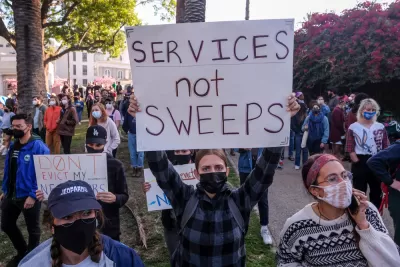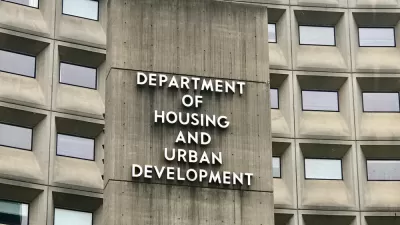Despite efforts at the state and local level to address the growing homelessness crisis, California is seeing the fastest increase in its unhoused population in the country.

California’s population of unhoused people accounts for 30 percent of the nationwide homeless population, reports Emily Hoeven for Cal Matters, as well as 50 percent of unsheltered people in the United States. For comparison, the state is home to 12 percent of the U.S. population. Meanwhile, half of the federal emergency housing vouchers issued to the state have gone unused, “largely because of bureaucratic hurdles in certain areas such as San Francisco, the Los Angeles Times reported Monday.”
According to the U.S. Department of Housing and Urban Development, the state also has the highest homelessness rate (44 people out of every 10,000) and the fastest increase in its homeless population (23.4 percent between 2007 and 2022). Nationally, the number of unhoused people remained roughly unchanged between 2020 and 2022.
Last week, new Los Angeles Mayor Karen Bass declared a state of emergency over the homelessness crisis, triggering access to state and federal funding sources. As Hoeven explains, L.A. homeless advocates warn that more people could become unhoused after February 1, when “when the city is set to lift a pandemic rule that blocked landlords from evicting tenants for nonpayment of rent and other reasons.” Bass “also issued a sweeping executive order Friday that aims to significantly speed up the development of 100% affordable housing by requiring city agencies to finish reviewing applications within 60 days — instead of the typical six to nine months.”
FULL STORY: California accounts for 30% of nation’s homeless, feds say

Planetizen Federal Action Tracker
A weekly monitor of how Trump’s orders and actions are impacting planners and planning in America.

Chicago’s Ghost Rails
Just beneath the surface of the modern city lie the remnants of its expansive early 20th-century streetcar system.

San Antonio and Austin are Fusing Into one Massive Megaregion
The region spanning the two central Texas cities is growing fast, posing challenges for local infrastructure and water supplies.

Since Zion's Shuttles Went Electric “The Smog is Gone”
Visitors to Zion National Park can enjoy the canyon via the nation’s first fully electric park shuttle system.

Trump Distributing DOT Safety Funds at 1/10 Rate of Biden
Funds for Safe Streets and other transportation safety and equity programs are being held up by administrative reviews and conflicts with the Trump administration’s priorities.

German Cities Subsidize Taxis for Women Amid Wave of Violence
Free or low-cost taxi rides can help women navigate cities more safely, but critics say the programs don't address the root causes of violence against women.
Urban Design for Planners 1: Software Tools
This six-course series explores essential urban design concepts using open source software and equips planners with the tools they need to participate fully in the urban design process.
Planning for Universal Design
Learn the tools for implementing Universal Design in planning regulations.
planning NEXT
Appalachian Highlands Housing Partners
Mpact (founded as Rail~Volution)
City of Camden Redevelopment Agency
City of Astoria
City of Portland
City of Laramie





























